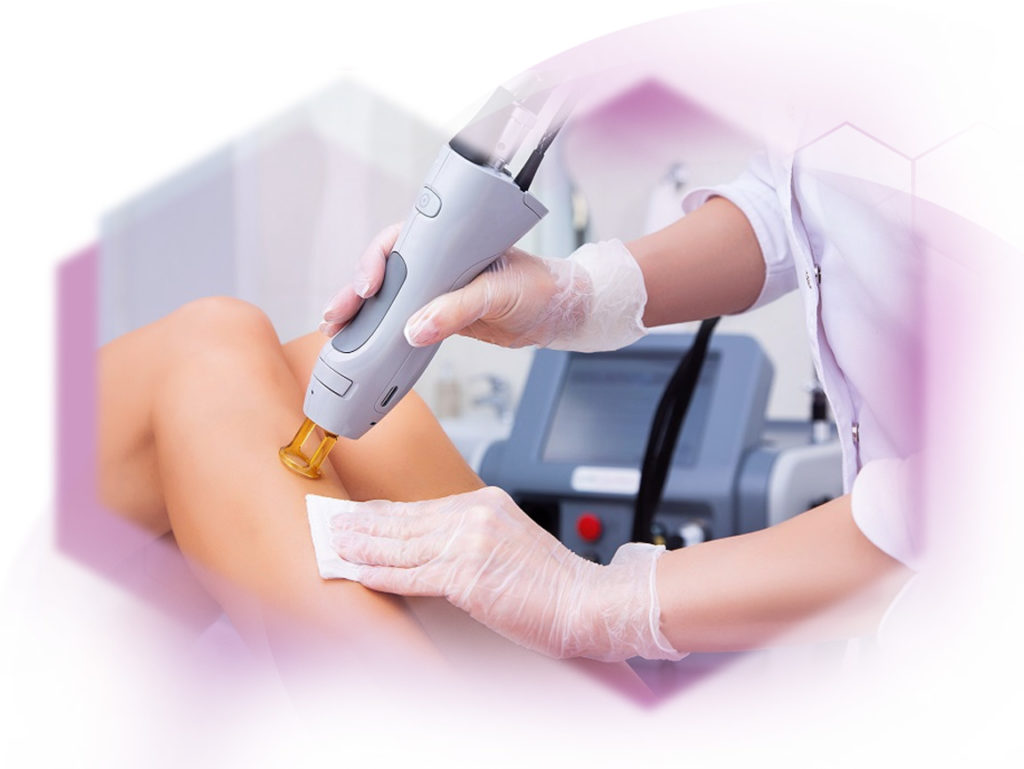What is a laser?
A LASER (light amplification by stimulated emission of radiation) works by emitting a wavelength of high energy light, which when focused on a certain skin condition will create heat and destroy diseased cells. Wavelength is measured in nanometres (nm).
Various kinds of lasers are available for use in skin surgery. They are differentiated by the medium that produces the laser beam. Each of the different types of lasers has a specific range of utility, depending on its wavelength and penetration. The medium amplifies the light of a particular wavelength as it passes through it. This results in the release of a photon of light as it returns to a stable state.
The duration of the light pulses affects the laser’s clinical applications in skin surgery.
What is an alexandrite laser?
The alexandrite laser produces a specific wavelength of light in the infrared spectrum (755 nm). It is considered a red light laser. Alexandrite lasers are also available in the Q-switched mode.
What is an alexandrite laser used for?
The US Food and Drug Administration (FDA) has approved a range of alexandrite laser machines emitting infrared light (wavelength 755 nm) for various skin disorders. These include Ta2 Eraser™ (Light Age, California, USA), Apogee® (Cynosure, Massachusetts, USA) and Accolade™ (Cynosure, MA, USA), Individual machines may be specially designed to focus on specific skin problems.
The following skin disorders can be treated with Alexandrite laser beams.
Vascular lesions
- *Spider and thread veins in the face and legs, some vascular birthmarks (capillary vascular malformations).
- *Light pulses target red pigment (haemoglobin).
- *Age spots (solar lentigines), freckles, flat pigmented birthmarks (congenital melanocytic naevi), naevus of Ota and acquired dermal melanocytosis.
- *Light pulses target melanin at variable depth on or in the skin.
- *Light pulses target the hair follicle causing the hair to fall out and minimising further growth.
- *May be used for hair removal in any location including underarms, bikini line, face, neck, back, chest and legs.
- *Generally ineffective for light coloured hair, but useful for treating dark hair in patients of Fitzpatrick types I to III, and perhaps light-coloured type IV skin.
- *The typical settings employed include pulse durations of 2 to 20 milliseconds and fluences of 10 to 40 J/cm2.
- *Extreme caution is recommended in tanned or darker skinned patients, as the laser can also destroy melanin, resulting in white patches of skin.
- *The use of Q-switched alexandrite lasers has improved the process of tattoo removal and today is considered the standard of care.
- *Alexandrite laser treatment is used to remove black, blue and green pigment.
- *The laser treatment involves the selective destruction of ink molecules that are then absorbed by macrophages and eliminated.
- *The short pulse duration of 50 to 100 nanoseconds allows laser energy to be confined to the tattoo particle (approximately 0.1 micrometres) more effectively than a longer-pulsed laser.
- *Sufficient energy must be delivered during each laser pulse to heat the pigment to fragmentation. Without enough energy in each pulse, there is no pigment fragmentation and no tattoo removal.
- *Tattoos that have not been effectively removed by other treatments may respond well to laser therapy, providing prior treatment has not caused excessive scarring or skin damage.
Pigmented lesions
Pigmented lesions
Hair removal
Tattoo removal
Alexandrite lasers may also be used to improve wrinkles in photo-aged skin.
Post time: Oct-06-2022

